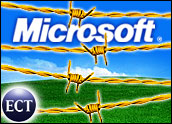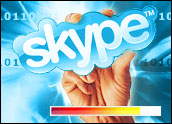
Microsoft has opened up its Contacts API (application programming interface) for the Windows Live platform, which will allow third-party developers to build applications that transfer and share contact information across various social networks.
The move — part of a larger strategy to adopt an open API strategy — comes as social networks and other online media companies work toward building third-party developer networks that create Web applications. Microsoft has already tapped Facebook, Bebo, Hi5, Tagged and LinkedIn — contact-oriented social networks, to integrate its contact-sharing application.
“For quite some time now, Microsoft has been making investments in the pursuit of data portability to put users at the center of their online experience, while at the same time being thoughtful about balancing user security and privacy with the experience,” wrote John Richards, Windows Live platform director, on the Microsoft developer blog.
Not Just Social
While social networking continues to make headlines, Microsoft’s move is targeted at the European Union, which has continually stung the company with massive fines for its slow movement toward interoperability, and Google, which is trying to create a hosted business application service to compete with Microsoft Office.
Microsoft has faced more than US$1 billion in fines from the EU, and Google’s free software suite has become more user-friendly within the last year.
That’s forced Microsoft to announce a series of concessions with its products: the Internet Explorer 8 upgrade will comply with universal Web standards, the Dynamic IT strategy creates a virtualized environment for Vista and now its concession to work with third-party developers working on social networking software.
“The Contact API is another move towards interoperability in their chain,” Dave Mitchell, senior vice president of IT research at London-based Ovum, a technology consulting firm, told TechNewsWorld. “The reality of today is moving Microsoft to play nicely with an open marketplace. It’s just not the same type of place [it was] five years ago. That’s only going to continue.”
The New World
Microsoft’s new world vision, Mitchell said, isn’t necessarily one that it wanted. Much of the driving force behind the company’s move to embrace standards and interoperability comes from the landscape that’s developed in the software and Web application worlds.
The OpenSocial experiment may be the best example of the changing social media landscape. The nonprofit organization launched to create a common protocol for all social networks, which allows developers to create one software application, such as a photo-sharing tool, which would work not just with MySpace, for instance, but every social networking platform that used the OpenSocial protocols.
This ease of sharing would allow people to exchange not just contacts, but any type of activities or persistent data such as a profile, Mitchell said.
Richards said Microsoft’s goal is to place users at the center of their online information experience, which means the company now has to compete for a digital audience that expects information to flow freely from Web application to Web application.
“There’s a whole proliferation of social networks with other functionalities,” said Mitchell. “The goal of OpenSocial is to remove that anarchy of contact information.”





















































